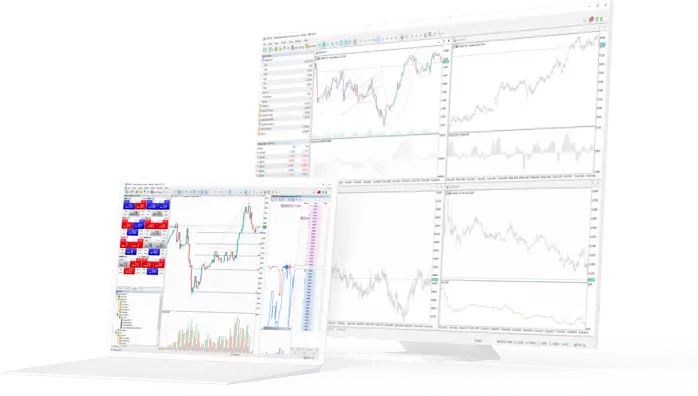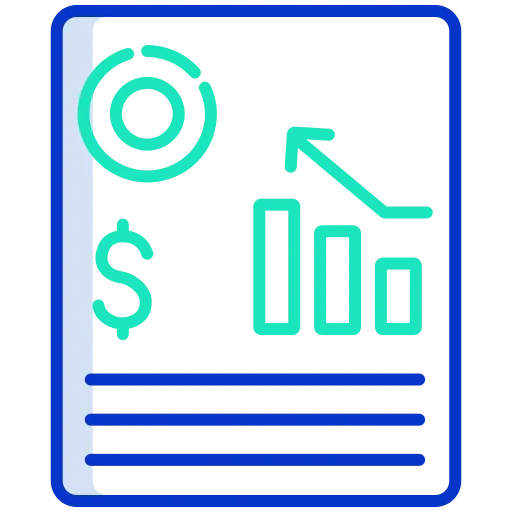About Stocks
Stock trading in simple words could be defined as buying and selling of company’s stocks in order to capitalize on regular price fluctuations. Stock CFDs are leveraged products; whereby traders trade stocks with leverage. Leveraged products enable traders to increase their exposure to an underlying asset. Over the last several decades, popularity of stocks trading has significantly increased; traders started switching from usual online investments to a more comfortable environment for trading stocks.

Cost effective & direct access to the global equity markets
Trade the company you believe
No extra fees apply
Trade the most popular stocks with lowest spread
Speculation on market uptrend’s/downtrends
- Asia
- Europe
- US
- ETF
| Company | Name | MT5 Symbol | Min Price Fluctuation |
Spread as low as | Avg Spread | Min/Max Trade Size | Margin % | Contract Size | Long Swap (Annual %) |
Short Swap (Annual %) |
3 day Swap | Limit/Stop levels |
Trading Hrs - GMT +2 |
|---|
| Company | Name | MT5 Symbol | Min Price Fluctuation |
Spread as low as | Avg Spread | Min/Max Trade Size | Margin % | Contract Size | Long Swap (Annual %) |
Short Swap (Annual %) |
3 day Swap | Limit/Stop levels |
Trading Hrs - GMT +2 |
|---|
| Company | Name | MT5 Symbol | Min Price Fluctuation |
Spread as low as | Avg Spread | Min/Max Trade Size | Margin % | Contract Size | Long Swap (Annual %) |
Short Swap (Annual %) |
3 day Swap | Limit/Stop levels |
Trading Hrs - GMT +2 |
|---|
| Name | MT5 Symbol | Min Price Fluctuation |
Spread as low as | Avg Spread | Min/Max Trade Size | Margin % | Contract Size | Long Swap (Annual %) |
Short Swap (Annual %) |
3 day Swap | Limit/Stop levels |
Trading Hrs - GMT +2 |
|---|

Stock CFDs trading hours (GMT+2 time zone, please note DST may apply)
Monday – Friday: 00:05 – 23:50
Stop/Limit Order levels may vary during news or unusual market conditions without prior notice.
The average spreads indicated here are calculated throughout the day. They tend to be narrower under normal market conditions. However, spreads may widen as a result of important news announcements, during political uncertainty, because of unexpected events that can lead to volatile market conditions, or at the close of the business day, or at the weekends when liquidity is lower. During such volatile and illiquid market conditions most liquidity providers quote spreads larger than normal. At such times, spread may increase.
Swap rates are calculated according to the stock currency’s relevant interbank rate. In the table above the swap values are indicative of the annual percentage. Long positions are charged with the relevant interbank rate plus a mark-up and short positions receive the rate minus a mark-up. The operation is conducted at 00:00 GMT+2 time zone (note that DST may apply) and can take several minutes. On Friday the swap is charged for three days.
CFD stocks are not physical shares and are not subject to any voting rights. When a corporate action occurs, a price adjustment may be applied to eliminate the impact on clients' trading accounts.
Margin requirements may be subject to change before earnings announcements and/or any corporate action.
The margin is always calculated using Lager Leg when you Hedge the Positions on CFDs.
The margin requirement for CFDs is calculated like this: Lots x Contract Size x Opening Price x Margin Percentage and not based on the leverage of your trading account.
Frequently Asked Question
Stocks of the most POPULAR COMPANIES you trust
A dividend is a distribution of profits by a corporation to its shareholders and usually as stocks. At Winstone Prime, we issue stocks as CFDs and hence the concept of voting rights or dividend does not apply.
Depending on their liquidity, traded volumes, spreads and volatility, there are three types of stocks: blue chips, mid-caps and small-cap stocks.
- Blue chip Stocks of the first group are very popular from the investment point of view. They are marked by tight spreads, high liquidity, low volatility and quite big daily traded volumes. These are stocks of such famous companies as Apple, Amazon, Facebook, Netflix, etc.
- Mid-caps are less interesting to investors because they have lower liquidity and smaller traded volumes. In addition to that, the spreads are wider.
- Small-caps When it comes to low capitalization stocks, they are considered the least liquid assets, which offer very large spreads, extremely high volatility and the smallest traded volumes.
“Blue chips" are the most reliable and liquid instruments, that’s why they are considered the best for all traders, even beginners. At the same time, trading in mid-caps and small-caps stocks require some experience and carefully laid out strategy.
Take advantage of the growing economy: With the growth of the economy, corporate earnings also tend to increase. It could be a good way to make profit out of suitable situations.
Stay ahead even during inflation: Past records indicate that stocks are able to make out the best returns. Even when they perform the minimum, they can earn the investors considerable profit to cushion the effects of inflation in various cases.
Easy: The regulations have made it very easy to buy stocks of listed companies.
Amazon, Facebook, Apple, Microsoft, Tesla, Alibaba, Ford Motor Company, General Motors Company, Google are the popular stocks traded across the globe. Most of them are available to trade in Winstone Prime.
Shares represent the proportion of ownership in the company while stock is a simple aggregation of shares in a company.
1. Can I get dividend for holdings stocks
A dividend is a distribution of profits by a corporation to its shareholders and usually as stocks. At Winstone Prime, we issue stocks as CFDs and hence the concept of voting rights or dividend does not apply.
2. What stocks are better for trading?
Depending on their liquidity, traded volumes, spreads and volatility, there are three types of stocks: blue chips, mid-caps and small-cap stocks.
- Blue chip Stocks of the first group are very popular from the investment point of view. They are marked by tight spreads, high liquidity, low volatility and quite big daily traded volumes. These are stocks of such famous companies as Apple, Amazon, Facebook, Netflix, etc.
- Mid-caps are less interesting to investors because they have lower liquidity and smaller traded volumes. In addition to that, the spreads are wider.
- Small-caps When it comes to low capitalization stocks, they are considered the least liquid assets, which offer very large spreads, extremely high volatility and the smallest traded volumes.
“Blue chips" are the most reliable and liquid instruments, that’s why they are considered the best for all traders, even beginners. At the same time, trading in mid-caps and small-caps stocks require some experience and carefully laid out strategy.
3. What are the advantages of Stock trading?
Take advantage of the growing economy: With the growth of the economy, corporate earnings also tend to increase. It could be a good way to make profit out of suitable situations.
Stay ahead even during inflation: Past records indicate that stocks are able to make out the best returns. Even when they perform the minimum, they can earn the investors considerable profit to cushion the effects of inflation in various cases.
Easy: The regulations have made it very easy to buy stocks of listed companies.
4. What are the popular stocks across the globe?
Amazon, Facebook, Apple, Microsoft, Tesla, Alibaba, Ford Motor Company, General Motors Company, Google are the popular stocks traded across the globe. Most of them are available to trade in Winstone Prime.
5. What is the major difference between stocks and shares?
Shares represent the proportion of ownership in the company while stock is a simple aggregation of shares in a company.
 Home
Home Funds
Funds Partners
Partners Get Help
Get Help FAQ
FAQ Chat With Us
Chat With Us Contact Us
Contact Us Call Back Request
Call Back Request Sign Up
Sign Up Cabinet
Cabinet
 About Us
About Us  Client Protection
Client Protection Account Types
Account Types Funding
Funding Trading Conditions
Trading Conditions Forex
Forex Commodities
Commodities Indices
Indices Cryptos
Cryptos Stocks
Stocks Bonds
Bonds MetaTrader 5
MetaTrader 5 FIX API
FIX API New to Forex
New to Forex Forex Glossary
Forex Glossary Traits of Successful Traders
Traits of Successful Traders Articles
Articles Ebooks
Ebooks Trading Strategies
Trading Strategies Daily Forecast
Daily Forecast Market Insights
Market Insights Weekly Forecast
Weekly Forecast Live charts
Live charts Economic Calendar
Economic Calendar Market Sentiment
Market Sentiment